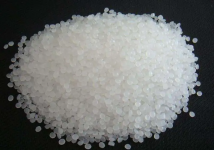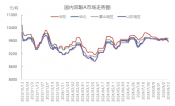read: 671 time:2025-05-22 12:45:45 from:化易天下
When discussing the acidity of substituted benzoic acids, it's essential to understand the underlying principles that govern acid strength. The acidity of benzoic acids, like other organic acids, is influenced by the presence and nature of substituents attached to the aromatic ring. In this article, we will analyze which substituted benzoic acid is most acidic, focusing on how different substituents impact the acid strength.
Benzoic acid, a simple aromatic carboxylic acid, has a carboxyl group (-COOH) attached to a benzene ring. The acidity of benzoic acid is measured by its ability to donate a proton (H+) from the carboxyl group. The strength of this acidity is influenced by the stability of the conjugate base formed after the proton is lost. The more stable the conjugate base, the more acidic the compound.
Substituents attached to the benzene ring can either increase or decrease the acidity of benzoic acid. This effect is due to the electronic properties of the substituents, particularly their electron-donating or electron-withdrawing nature. Substituents can be classified as:
Electron-Withdrawing Groups (EWGs): These groups pull electron density away from the aromatic ring, stabilizing the negative charge on the conjugate base. Common examples include -NO₂ (nitro), -CN (cyano), and -CF₃ (trifluoromethyl). These groups increase the acidity of benzoic acid.
Electron-Donating Groups (EDGs): These groups push electron density towards the aromatic ring, making the conjugate base less stable. Examples include -OH (hydroxyl), -NH₂ (amino), and -OCH₃ (methoxy). These groups decrease the acidity of benzoic acid.
The position of the substituent relative to the carboxyl group also plays a crucial role in determining the acidity of the benzoic acid derivative. Substituents in the ortho (2-position), meta (3-position), or para (4-position) can have varying impacts:
Ortho Position: The proximity of the substituent to the carboxyl group can lead to steric hindrance or increased inductive effects. This can either slightly increase or decrease acidity depending on the nature of the substituent.
Meta Position: Substituents in the meta position typically exert only an inductive effect, making it a good position to study the pure electronic influence without resonance effects.
Para Position: Substituents at the para position can influence acidity through both inductive and resonance effects, depending on the nature of the group.
Considering the factors above, which substituted benzoic acid is most acidic? The answer lies in the combination of a strongly electron-withdrawing group at a position that maximizes its effect.
Among common substituents, the nitro group (-NO₂) is one of the most electron-withdrawing. When the nitro group is positioned at the meta or para position relative to the carboxyl group, it significantly increases the acidity of the benzoic acid. In particular, para-nitrobenzoic acid is often considered the most acidic among simple substituted benzoic acids because the nitro group stabilizes the conjugate base through both inductive and resonance effects. Meta-nitrobenzoic acid also exhibits high acidity, but the effect is somewhat less pronounced compared to the para derivative.
In summary, when determining which substituted benzoic acid is most acidic, one should look for the presence of a strong electron-withdrawing group like -NO₂, preferably in the para position. This arrangement maximizes the stabilizing effects on the conjugate base, leading to a higher acid strength. Understanding these principles is crucial for predicting the behavior of substituted benzoic acids in various chemical reactions and applications.
This detailed analysis should help in grasping the key factors that influence the acidity of substituted benzoic acids, and guide your choice when exploring these compounds in chemical contexts.

Jincheng Petrochemical's 300000 ton polypropylene plant successfully trial production, 2024 polypropylene market analysis

The ABS market remains sluggish, what is the future direction?

Market differentiation of bisphenol A intensifies: prices rise in East China, while prices generally decline in other regions

The production method and process flow of silicone acrylic lotion, and what are the common raw materials